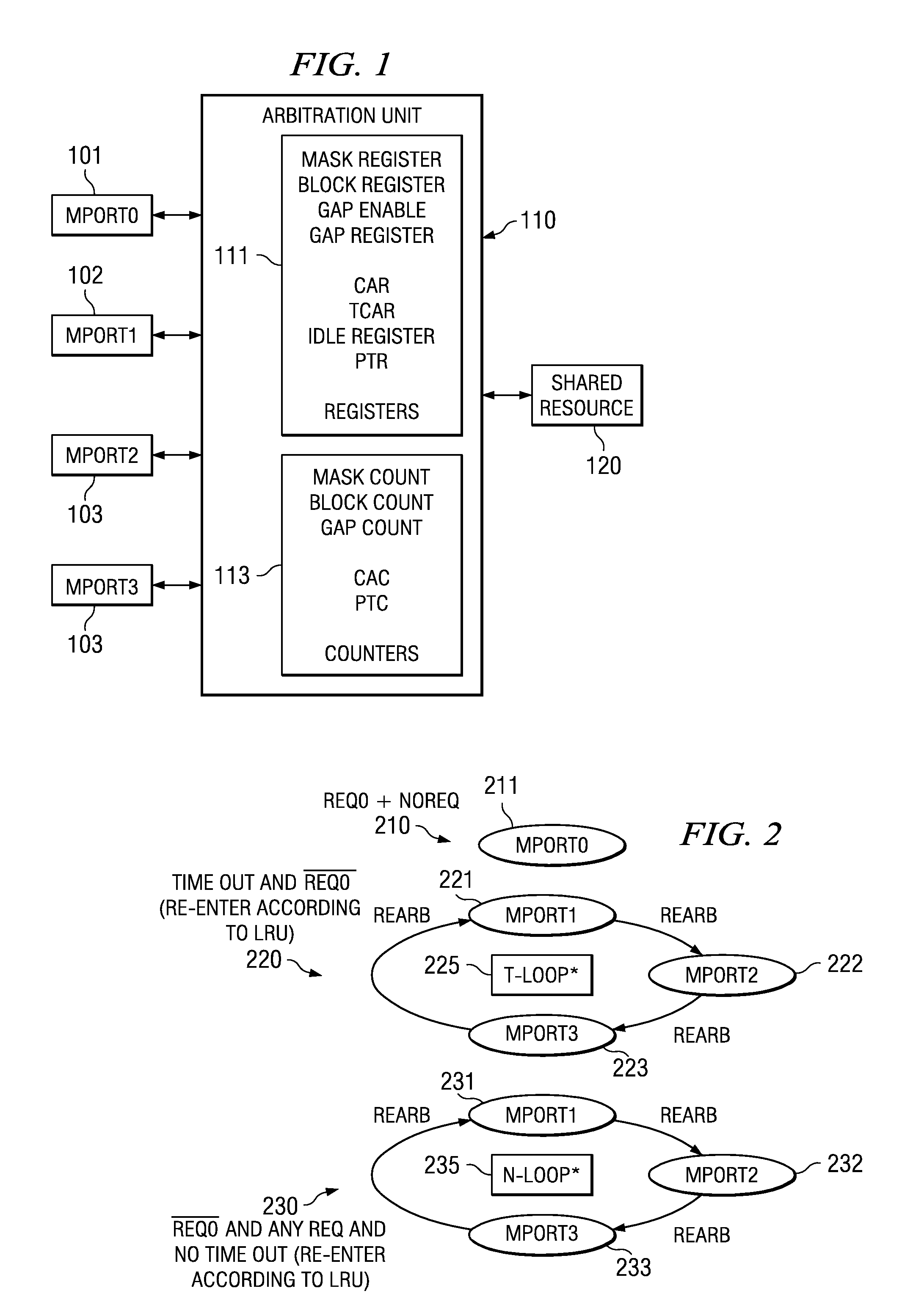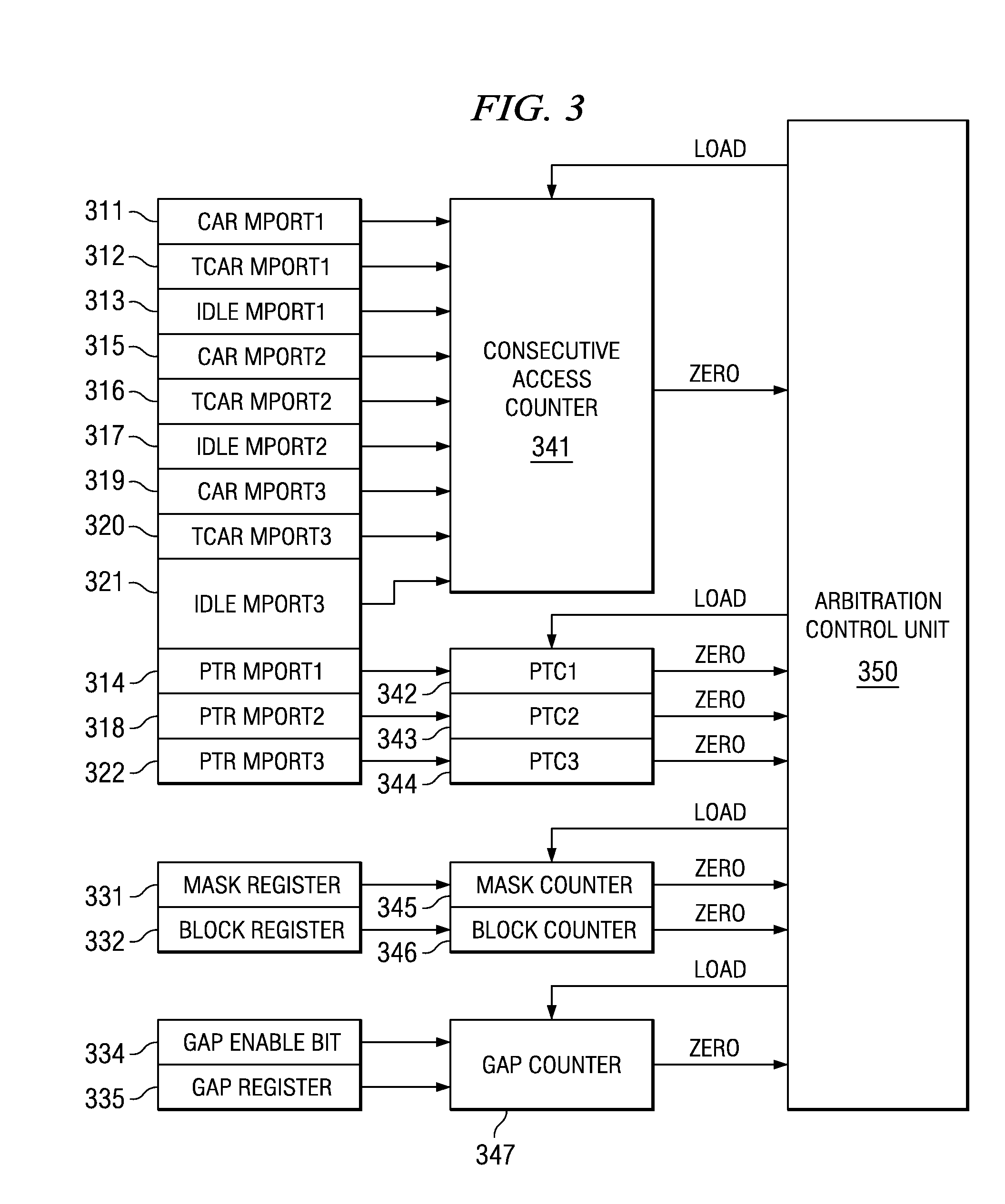Software programmable dynamic arbitration scheme
a dynamic arbitration and software technology, applied in the field of software programmable dynamic arbitration schemes, can solve the problems of not helping in meeting real time requirements, wasting bandwidth for the remaining requesters, and hurting the bandwidth requirements of other accessors
- Summary
- Abstract
- Description
- Claims
- Application Information
AI Technical Summary
Benefits of technology
Problems solved by technology
Method used
Image
Examples
Embodiment Construction
[0013]FIG. 1 illustrates the plural requester devices and the arbitrator of this invention. The devices include Mport0101, Mport1102, Mport2103 and Mport3104. Each of these devices is connected to arbitration unit 110. Arbitration unit 110 receives access requests from devices 101, 102, 103 and 104 and selects one for access to shared resource 120. Arbitration unit 110 includes registers 111 and counters 113. Registers 111 include a mask register, a block register, a gap enable bit and a gap register associated with Mport0101. Registers 111 include a consecutive access register (CAR), a time out consecutive access register (TCAR), an idle register and a priority time out register (PTR) associated with each of Mport1 to Mport 3. In the preferred embodiment these registers are memory mapped into the memory space of a data processor. Arbitration unit 110 grants access to one requesting Mport to shared resource 120.
[0014]FIG. 2 illustrates the priority hierarchy of this invention. There...
PUM
 Login to View More
Login to View More Abstract
Description
Claims
Application Information
 Login to View More
Login to View More - R&D
- Intellectual Property
- Life Sciences
- Materials
- Tech Scout
- Unparalleled Data Quality
- Higher Quality Content
- 60% Fewer Hallucinations
Browse by: Latest US Patents, China's latest patents, Technical Efficacy Thesaurus, Application Domain, Technology Topic, Popular Technical Reports.
© 2025 PatSnap. All rights reserved.Legal|Privacy policy|Modern Slavery Act Transparency Statement|Sitemap|About US| Contact US: help@patsnap.com



